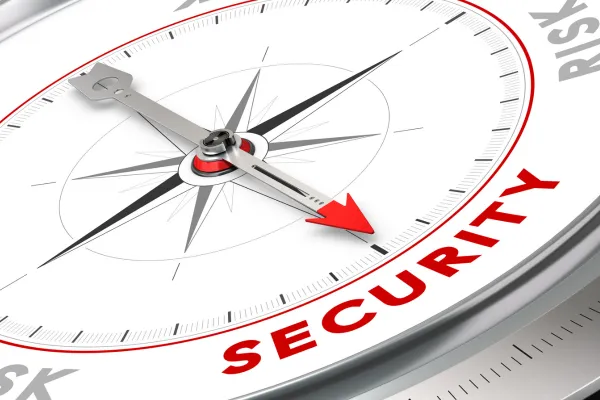Blog & News

Security Strategy: Building a Robust Framework for Physical Protection
Security Strategy: Building a Robust Framework for Physical Protection
In today's unpredictable environment, having a well-defined security strategy is crucial. Whether your business is a corporate office, manufacturing plant, or construction site, the need for a robust physical security plan is more critical than ever. At Steel Bison Security, we understand that a comprehensive security strategy not only protects valuable assets but also ensures operational continuity, regulatory compliance, and stakeholder confidence.
This blog post will explore the essential components of an effective security strategy, best practices for implementation, and the role of advanced technology. We'll also address common challenges and future trends shaping physical security today.
1. Understanding the Importance of a Security Strategy
A security strategy is more than just a reactive measure; it is a proactive plan designed to identify vulnerabilities, mitigate risks, and prepare for unforeseen events. A robust security strategy can:
Protect Assets and Personnel: Safeguard critical infrastructure, equipment, and employees.
Ensure Business Continuity: Minimize operational disruptions during emergencies.
Meet Regulatory Requirements: Comply with safety standards and reduce the risk of legal liabilities. Regulatory bodies such as the Occupational Safety and Health Administration (OSHA) and the National Fire Protection Association (NFPA) set guidelines that are vital for any security framework.
Enhance Stakeholder Confidence: Build trust with clients, investors, and employees by demonstrating a commitment to safety and security.
In a world where threats—both internal and external—are continuously evolving, a well-crafted security strategy is essential to stay ahead.
2. Core Components of an Effective Security Strategy
To build a strong security strategy, organizations must address several critical components. Each element plays a vital role in forming a comprehensive security plan that is both adaptive and resilient.
2.1. Risk Assessments and Vulnerability Analysis
Before any security measures can be implemented, it is essential to understand your organization's specific risks. Conduct thorough risk assessments to identify and evaluate potential vulnerabilities.
Asset Identification: List all valuable assets, including physical property, equipment, and sensitive information.
Threat Analysis: Determine the potential threats—ranging from theft and vandalism to natural disasters and human errors.
Vulnerability Mapping: Assess the weak points in your current security setup. This may include areas with inadequate lighting, insufficient access control, or outdated surveillance technology.
Impact Assessment: Evaluate the potential impacts of each threat. Prioritize security investments based on the likelihood and potential cost of disruption.
2.2. Policies, Procedures, and Training
A critical yet often overlooked aspect of a security strategy is the human factor. Even the most advanced technology will fail if employees are unaware of proper protocols.
Security Policies: Develop comprehensive policies that outline the roles and responsibilities of your team in maintaining security.
Standard Operating Procedures (SOPs): Create detailed procedures for emergency response, access control, incident reporting, and routine maintenance.
Employee Training: Regularly train employees on security best practices, including how to identify suspicious activities and how to respond in an emergency. Engaging training sessions and drills can ensure that your team is always prepared.
2.3. Physical and Perimeter Security
Protecting your physical space requires a multi-layered approach that includes both visible deterrents and covert measures.
Perimeter Fencing and Barriers: Use robust fencing, barriers, and gates to secure the boundaries of your property.
Access Control Systems: Implement badge readers, biometric scanners, or PIN-based systems to restrict entry to authorized personnel only.
Surveillance: Install high-definition CCTV cameras with real-time monitoring capabilities. Integrating these systems with modern analytics can help detect unusual activities early.
Lighting: Adequate lighting reduces blind spots and creates a secure environment, particularly during off-hours.
2.4. Technology Integration and Advanced Monitoring
Leveraging the latest technologies can significantly enhance your security strategy. Modern systems offer real-time monitoring and data analytics to provide actionable insights.
Integrated Security Platforms: Consolidate various security systems—such as CCTV, access control, and alarm systems—into a single, unified platform. This integration enhances situational awareness and speeds up response times.
Alarm Systems: Advanced alarm systems can automatically notify security personnel or law enforcement of potential breaches.
Mobile and Cloud-Based Monitoring: Cloud-based solutions provide centralized management of security data, making it easier to update systems and respond to alerts remotely.
Artificial Intelligence (AI): AI-powered analytics can discern between normal and suspicious activities, reducing false alarms and focusing attention on real threats.
For more details on how our integrated solutions can enhance your security strategy, visit our services page.
2.5. Incident Response and Business Continuity Planning
A proactive security strategy doesn’t just prevent incidents—it also provides a clear plan for rapid recovery when an incident occurs.
Emergency Response Plans: Develop detailed emergency response protocols to manage crises effectively. This includes clear evacuation procedures, communication protocols, and roles for each team member.
Business Continuity Planning (BCP): Ensure that critical operations can continue during and after a security incident. This requires backup systems, data redundancy, and clear communication channels to support swift operational recovery.
Regular Drills: Conduct regular drills and simulations to test your emergency response and business continuity plans, ensuring that all personnel are familiar with their roles and responsibilities.
3. Best Practices for Implementing a Security Strategy
Implementing an effective security strategy is an ongoing process that requires regular updates and continuous improvement. Here are some best practices to guide you:
3.1. Conduct Regular Security Audits
Regular audits and reviews are essential to ensure that your security strategy remains effective over time.
Internal Audits: Periodically review your security policies, technology, and employee training programs to ensure they are up-to-date.
Third-Party Evaluations: Engage external security experts to conduct independent assessments of your security infrastructure. External evaluations can provide unbiased insights and help identify potential blind spots.
3.2. Stay Updated with the Latest Threats and Technologies
Security threats and technologies are constantly evolving. To maintain an effective strategy:
Continuous Learning: Stay informed about emerging threats and technological advances by subscribing to industry publications, attending seminars, and participating in professional networks.
Technology Upgrades: Regularly update your equipment and software to take advantage of the latest security innovations. Investing in modern systems not only enhances security but can also improve efficiency and reliability.
3.3. Foster a Culture of Security Awareness
A successful security strategy begins with a culture that values safety and preparedness.
Management Commitment: Leadership must actively support and promote security initiatives.
Employee Engagement: Encourage employees to take an active role in security by providing regular updates, training sessions, and channels to report concerns.
Transparency and Communication: Maintain open lines of communication regarding security policies and any changes or updates. This not only improves compliance but also builds trust within the organization.
3.4. Integrate Security into Daily Operations
Security should not be seen as a separate function but as an integral part of your daily business operations.
Operational Procedures: Ensure that security measures are incorporated into daily workflows and not treated as an afterthought.
Collaboration Between Departments: Foster cross-departmental collaboration to ensure that all parts of the organization are aligned in their security efforts. For example, the IT and facilities management teams should work closely to secure both digital and physical assets.
Regular Feedback: Gather feedback from employees and security personnel to identify areas for improvement, and adjust your strategy accordingly.
4. Challenges in Developing and Maintaining a Security Strategy
While the benefits of a robust security strategy are clear, organizations often face obstacles that can hinder effective implementation. Common challenges include:
4.1. Budget Constraints
Investing in comprehensive security measures can be costly, particularly for small to medium-sized businesses.
Solution: Prioritize your investments based on risk assessment outcomes. Focus on high-risk areas first and implement solutions in phases to spread out the cost over time.
4.2. Resistance to Change
Employees and management might resist new security measures, especially if they disrupt established workflows.
Solution: Involve stakeholders in the planning process and clearly communicate the benefits of enhanced security measures. Providing training and demonstrating a commitment to safety can help alleviate resistance and foster a cooperative environment.
4.3. Legacy Systems and Integration Issues
Older security systems may not be compatible with modern technologies, creating challenges when trying to integrate new solutions.
Solution: Evaluate your existing infrastructure thoroughly and consider adopting hybrid systems that bridge legacy technology with modern innovations. In some cases, gradual system upgrades may be necessary to achieve full integration.
4.4. Managing a Dynamic Threat Landscape
The nature of security threats is constantly evolving, making it challenging to maintain an effective and up-to-date strategy.
Solution: Regularly update your risk assessments and security protocols. Staying informed through industry research and expert consultation can help your organization adapt to new challenges as they arise.
5. Future Trends in Security Strategy
Advancements in technology and shifts in regulatory requirements are shaping the future of physical security. Keeping an eye on emerging trends can help ensure your security strategy remains robust and forward-thinking.
5.1. Increased Use of Artificial Intelligence and Machine Learning
AI and machine learning are set to revolutionize security strategy by enabling predictive analytics and enhancing real-time monitoring. These technologies can help identify potential security breaches before they occur, significantly reducing response times and false alarms.
5.2. Enhanced Integration with IoT
The Internet of Things (IoT) is expanding the ways we secure physical spaces. Integrated IoT devices, such as smart sensors, connected cameras, and automated access control systems, provide richer data streams and enable more nuanced threat detection.
5.3. Cloud-Based Solutions and Mobility
The shift to cloud-based security platforms is making it easier to manage, update, and monitor security systems remotely. Mobile integration allows security teams to receive alerts, review live feeds, and coordinate responses from anywhere, ensuring that critical information is always within reach.
5.4. Sustainability in Security
With growing emphasis on sustainability, the future of security strategy also includes eco-friendly solutions—energy-efficient systems, solar-powered sensors, and greener infrastructure—that reduce environmental impacts without compromising on protection.
6. How Steel Bison Security Can Help You Build a Robust Security Strategy
At Steel Bison Security, we specialize in developing comprehensive security strategies tailored to your organization’s unique needs. Our services include:
Risk and Vulnerability Assessments: We evaluate your existing security infrastructure to identify weaknesses and recommend targeted solutions.
Integrated Security Solutions: Our advanced systems combine CCTV, access control, alarm monitoring, and more into one cohesive platform.
Employee Training Programs: We design custom training and drill programs to ensure that your staff is always prepared and informed.
Consultation and Support: With expert consultation and continuous support, our team works with you every step of the way to adapt your security strategy as new challenges arise.
To learn more about how we can support your security initiatives, please visit our services page or reach out through our contact page.
7. Conclusion
Developing a robust security strategy is an ongoing process that requires careful planning, continuous evaluation, and a commitment to leveraging both human and technological resources. By understanding your risks, integrating advanced systems, and fostering a culture of security awareness, your organization can protect its assets, ensure business continuity, and meet regulatory requirements.
At Steel Bison Security, our goal is to empower your business with expert security solutions that adapt to evolving threats. Embracing a proactive and integrated approach to security strategy not only protects your physical assets but also builds lasting confidence with employees, clients, and stakeholders.
Invest in a comprehensive security strategy today—because in a dynamic threat landscape, robust preparation and adaptability make all the difference.
By following these best practices and keeping abreast of emerging trends, your organization can build and maintain a security strategy that meets today's challenges and anticipates tomorrow's risks. Partner with experts like Steel Bison Security to ensure that every aspect of your physical security is covered, so you can focus on what you do best: running your business.

EMAIL ADDRESS
OFFICE NUMBER
OFFICE ADRESS
(WA) 11900 NE First St STE 3066, Bellevue, Wa 98005
(WY) 30 N. Gould St STE R, Sheridan, Wy 82801
Copyright 2024 Steel Bison Security Services
